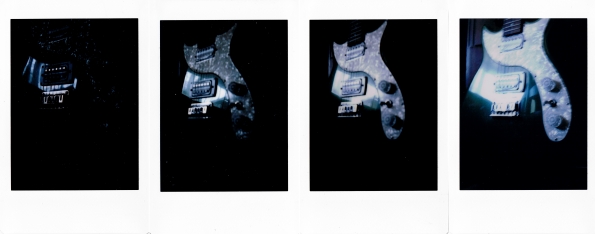
You know I procured an Instax Mini 50s last year, right? I wanted to test the waters of Instax Mini before investing in the ultimate Mini camera: the Mini 90. While I did enjoy the results I got from the 50s, I found some of the features (or lack thereof) to be limiting. Therefore, I decided it was time to give myself an UPGRADE. Enter: The Fuji Instax Mini 90 Neo Classic (which is quite a mouthful of a name for a small camera!)

 Can you blame me? Phwoar!
Can you blame me? Phwoar!
About the Instax Mini 90 Neo Classic:
- Film type: Fuji Instax Mini (800 ASA)
- Shutter speed range: auto range of 1.8s – 1/400s, maximum of 10s exposure in bulb mode
- Two shutter release buttons (one on top for shooting landscape orientation and one on front for portrait orientation)
- Focusing: 3 user-selectable settings: .3m-.6m macro mode, .6m -3m normal mode, 3m-∞ landcape mode
- Exposure system: automatic, with the ability to choose to Lighten or Darken each exposure (+2/3 or -2/3, or +1 on extra Lighten)
- Power supply: rechargeable proprietary battery (I believe the only Instax to employ a proprietary battery)
- Flash: auto (with brightness control available,) forced flash (flash on,) flash off, red eye reduction mode
- Modes and exposure settings achieved through buttons on the back of the camera or in conjunction with a mode dial wheel around the lens.
- Double exposure mode
- “Kids mode” (faster shutter speed to capture a moving object such as a child or pet)
- “Party mode” (slow-sync flash)
 mode buttons and LCD screen which shows battery power, mode selected, and the number of shots taken
mode buttons and LCD screen which shows battery power, mode selected, and the number of shots taken
The main draw to the Mini 90 for me, and for most people I know who have that camera, is the fact that you can switch off the camera’s flash. All the other Mini cameras only offer auto flash. I personally found this to be irritating, because there were times when using the Mini 50s that I KNEW the flash wasn’t needed but the camera chose to use it anyway.
The other reason I wanted the Mini 90 was its built-in macro setting. With such small photos, I often wish to fill the frame more thoroughly than was allowed by my 50s and its minimum focus distance.
I am going to admit right here and now that these features I was so keen on having in an Instax camera also have brought with them a learning curve. I wrote which settings I used on the back of each photo after it was taken so I could chart my successes and my failures. The thing I didn’t know about this camera’s macro feature is that it stops the lens’s aperture down to f/22. YIKES. My first attempts at using macro + no flash + bulb didn’t go too well.
Left to right, failed macro exposures: 1) flash off, auto exposure, Lighten, macro 2) flash off, macro, bulb, 2 seconds 3) flash off, macro, bulb, 6 seconds 4) flash off, macro, bulb, 10 seconds

flash off, auto exposure, macro, Lighten

no flash, auto exposure, Darken

flash off, macro, bulb, 6 seconds
My Tower Bridge platter – aka “the most beautiful thing I own.” Thanks Clark 🙂
 flash off, auto exposure, Darken
flash off, auto exposure, Darken
Sonja moved during the exposure, so her eyes are blurry. But I like how vibrant and glowing her eyes are in this photo! Guest appearances made by my purse and scarf in the background.

flash off, auto exposure, Lighten

flash off, auto exposure, Darken
Oh, Wyatt
Pack two shot with the Mini 90 went MUCH better than the first pack did (plus it was my fave: rainbow frames!)

Flash off, auto exposure, macro, Lighten
Jar of conversation hearts

Left: flash off, macro, bulb, 6-7 seconds. Right: flash off, macro, bulb, 10 seconds
🙁 Trying to photograph my new candy apple red stand mixer. Bad luck with macro again.

flash off, macro, bulb, 2-3 seconds
Mini vegan pear pie ♥

flash off, auto exposure, macro, Lighten
Pie and conversation hearts

flash off, auto exposure, Lighten
Luv bots ♥



flash off, auto exposure (macro mode on shot #3 of the bikes)
Rainbow bikes and rainbow frames!

flash off, macro, bulb exposure, 10 seconds
Finally success photographing my new KitchenAid stand mixer! I had to draw the curtains back to try to get more light to the mixer.
Conclusion?
I have no doubt that the Instax Mini 90 and I are going to be good friends. I just have to learn how to make the best of the very features which were the reason I upgraded to this camera in the first place. Now that we are exiting the winter of our discontent and heading for spring, I hope to make better use of the Mini 90. Watch this space. I expect it to be filled with more Mini 90 photos soon!
